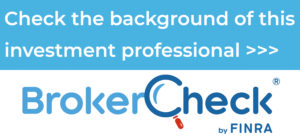SETTING FIRE TO RETIREMENT PLANNING
The Financial Independence, Retire Early (FIRE) movement is gaining steam.
How much money do you need to retire in your 40s or 50s? That’s a question more people are asking, thanks to a growing movement: Financial Independence, Retire Early (FIRE). FIRE is based on the idea that saving more and spending less will help younger workers retire well before they reach 65. Some of them even want to retire when they’re in their 30s or 40s.
FIRE has gained steam with millennials. The book Your Money or Your Life by Vicki Robin and Joe Dominguez is credited as the inspiration for the movement. Published in 1992, the book popularized many of the ideas that fuel FIRE—especially the idea that people should evaluate every purchase or expense and consider how many hours of work it cost them. (1)
Not all FIRE strategies are the same
Most FIRE followers strive to save and invest 50%–75% of their income. That’s a surprising goal, considering the average percentage of income Americans typically set aside in savings is 3.4%. (2) But the main focus of FIRE is establishing enough financial independence to retire early and have the freedom to choose your next steps.
FIRE strategies vary, depending on current finances and retirement goals, but basically boils down to living below your means and aggressively saving money. A FIRE retirement may range from a minimalist lifestyle called “Lean FIRE” to a “Fat FIRE” filled with traveling, shopping, and more. There is also a “Barista FIRE” model which involves a flexible side hustle or part-time work to supplement their savings.
Whatever the strategy, the main focus of FIRE followers is to retire early from full-time work and enjoy their free time—whether that means spending more time with loved ones, traveling, enjoying their hobbies, starting their own business, or something else.
The math behind FIRE
The amount of money FIRE followers need to reach financial independence is their FIRE number, and many followers use the
4% rule to determine what that is. The rule is a popular retirement strategy that suggests you need to invest 25 times your
annual expenses in order to maintain your current lifestyle for 30 years by withdrawing 4% from your investments each year.
Someone whose average yearly expenses are $50,000, for example, needs a portfolio of $1.25 million to withdraw 4% of their
portfolio ($50,000) to meet their annual expenses.
This is just an estimate of their needs, however, and FIRE followers should consider how market conditions or collecting Social
Security might impact their strategy.
Tips for FIRE success (3)
FIRE may not be a good fit for most people, but everyone wants to achieve financial independence sooner, rather than later. To help you on your path to financial independence, consider these tips:
Speak with a financial professional specialist for help creating a budget and financial plan to achieve your goals.
Save more money. The more you save, the faster you can achieve your goals.
Make more money.
Eliminate debt—especially high interest debt.
But don’t forget—there are risks and expenses to early retirement
While FIRE followers are optimistic about their retirement landscape, AARP points out that early retirement can be tricky for the
following reasons: (4)
Health care is expensive, and Medicare doesn’t start until age 65.
If you withdraw money too early from most tax-deferred accounts, you probably will have to pay a 10% early-withdrawal penalty. You will also owe income taxes on withdrawals from traditional accounts funded with pretax contributions.
You may outlive your investment savings—and health expenses may add up, along with housing expenses.
You lose the benefits of compounding interest.
Extra income may be difficult to come by.
Inflation may spoil your spending plans.
For some people, early retirement can also lead to boredom, as their friends may still be working all day and worn out at night.
So, if you’re thinking about taking this path, you may need to make new friends, start volunteering, pick up a hobby, join a club—
or even consider getting a job to fill the time and put more money in your pocket.
Thanks for checking out the blog.
Joe Breslin , CFP®
Sources
(1) Investopedia: Financial Independence, Retire Early (FIRE) Explained: How It Works, updated March 27, 2023
(2) MoneyGeek, updated 6/14/2023: Average Personal Savings of Americans
(3) Time, Personal Finance, May 29,2023: What is FIRE Movement: Financial Independence, Retire Early?
(4) AARP: 10 Things No One Tells You About Early Retirement, updated April 13, 2023
This material is for general information only and is not intended to provide specific advice or recommendations for any individual. There is no assurance that the views or strategies discussed are suitable for all investors or will yield positive outcomes. CDs are FDIC Insured to specific limits and offer a fixed rate of return if held to maturity, whereas investing in securities is subject to market risk including loss of principal.
Prior to investing in 529 Plan investors should consider whether the investor’s or designated beneficiary’s home state offers any state tax or other state benefits such as financial aid, scholarship funds, and protection from creditors that are only available for investments in such state’s qualified tuition program. Withdrawals used for qualified expenses are
federally tax free. Tax treatment at the state level may vary. Please consult with your tax advisor before investing.
This material was prepared by LPL Financial. Securities and advisory services offered through LPL Financial (LPL), a registered investment advisor and broker-dealer (member FINRA/SIPC).
Insurance products are offered through LPL or its licensed affiliates. To the extent you are receiving investment advice from a separately registered independent investment advisor that is not an LPL Financial affiliate, please note LPL Financial makes no representation with respect to such entity.
Securities and insurance offered through LPL or its affiliates are: 









